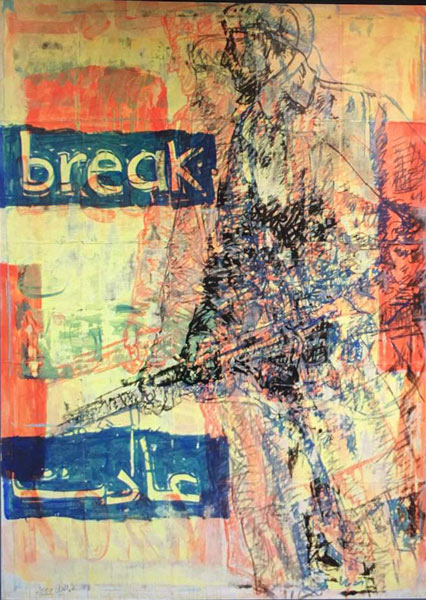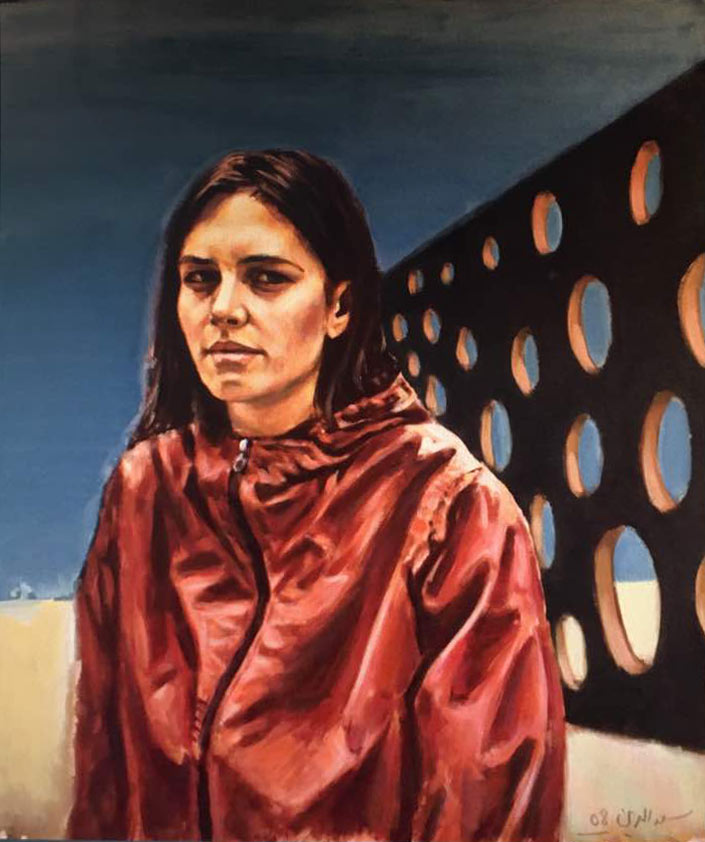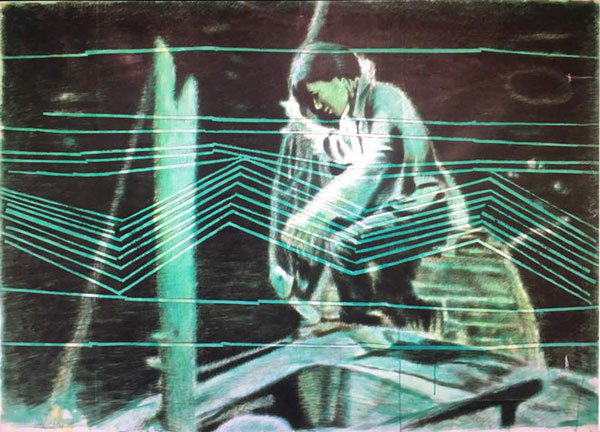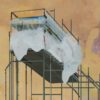The rare welcome of Masoud Sadedin exhibition in Germany
According to the outstanding international artist in Lands Museum at Bonn
Avammag Webite By: Javid Ramezani
translated by: narges marandi
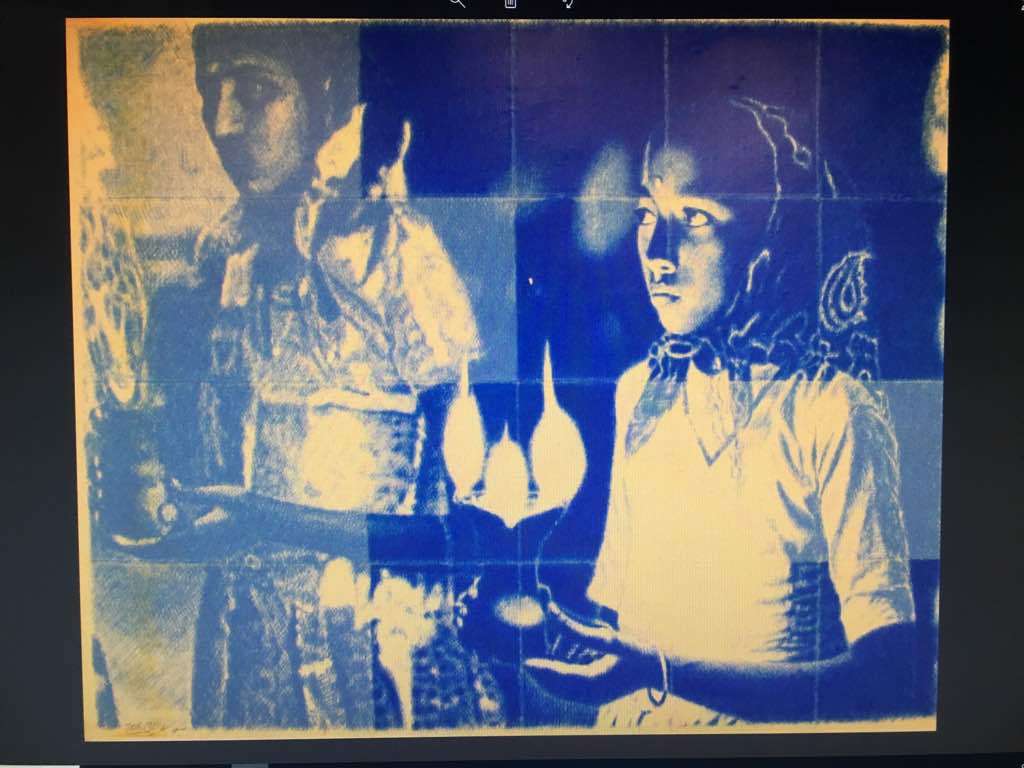
The exhibition of a successful Iranian painter in September was warmly welcomed in Bonn. His series; “Familiar As A Stranger” indicates a “metaphysical-presence” paradox. That is what makes his current living status, being an immigrant, an exploration situation regarding the ontological view which assumes humane as a stranger in this world. Such dilemma though, does not seem to be alike; the human fallen from heavens to the earth, in comparison with the human immigrated from his/her country to a strange land. The Iranian human, to whose life I am close, has constantly been moving under the pressure of living and geographical restrictions; one was at times the origin of migration of India, and minor dictatorship of Ottoman, and the western surrounded lands.
I have to admit that I like Sadedin’s works not only because he was a student of Alkhas, and yet he tried a different direction, but because he uses the contemporary painters’ realistic forms very much engaged on the inside; something I have rarely encountered with, in other contemporary painters’ works.
Their origin is a more of a photographical act. I do not state it in the position of a critic, but as a photographer/painter who has lived and produced based on both sides. Painters such as Khalili, Afsarian, Hamid Reza Emami, Taherpour, Heidari and etc have all moved from photography with no tendency to their expression of sense, texture and drawing, but the quality of painting’s tools’ in their works. Such quality does not even continue in their human relationships. the result is poetic along with reality representation. They are defeated by photograph’s semiotic philisophying, because it is the era of understanding through (pretending) a complication. The “gram-oriented” behavioral study is my evidence. (Instagram, Telegram, etc) The terrifying phrase that says: “reading this article requires less than 5 minutes.” Following the contents of the sites and educated channels would specify my intentions.
You see a wall, water, a yard and an old thing and etc., and realize what it is. Of course, I do not consider this at painter’s hands. It is the contemporary situation and major discourses that create such force. Contemporary purchasers who are not experienced enough and do not feel content facing obscure concepts and images. Provided that they feel insufficient, they subconsciously feel reluctant to purchase. So as the field of criticism. Compare Greenburg’s “Towards the New Laklaun” article with that of Jerry Saltz which has received Pulitzer Prize.
Although Sadedin begins his production with photography, I do not see that photographical moment in his works. Still, I believe the distance between the two media is this inner moment. All his paintings have the same reality accent and form, however, the picture is thorouly his constructed image. As if the scene for photography is also influenced and installed by his mind. In fact, modernist artists’ structural concerns and their thought of being viewed is not an issue for me but the amount of their dependence to integrity, is a timeless signification and clarity that determines function of today’s painting. Human is the most important object engaged in Sadedin’s paintings and the scene is organized in a slow, timeless progression. On the other hand, this is the same historic ontological connection with the living experience of the artist. That is why I do not see these two aesthetic experience apart from each other. Images which are close in the horizon of history and strange in the present.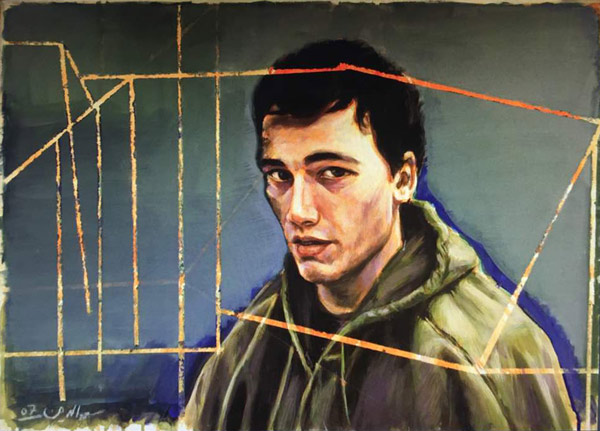
Masoud Sadedin was born in 1956 in Semnan. He was graduated from faculty of Fine Arts, University of Tehran in 1980 in painting. He was taught painting by masters such as Vaziri, Shabahangi, Azargin, Momayez, Grigorian, Hamidi and Hannibal Akkhas. He has been living in Germany since 1985.



